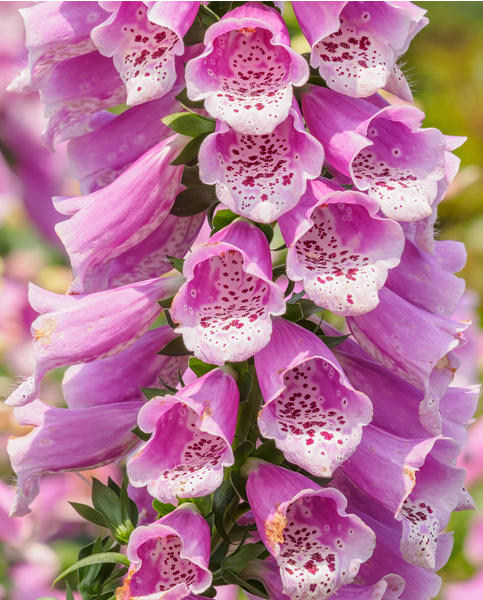How to grow Fuchsia
There are around 100 species of fuchsia – some perennial, others shrubby – all originating from mountainous areas of Central and South America and New Zealand. Many are cultivated for their pretty, two-tone, hanging flowers which are often borne continuously throughout summer and autumn (in mild areas they may flower all year round). These have been used to breed thousands of varieties, offering single and double flower forms in countless variations of pink, purple, red, or white. Foliage can be variegated or plain, and the growth habit may be upright or trailing. Tender and half-hardy varieties tend, in the UK, to be grown as annual summer bedding or conservatory plants, while hardy varieties can make permanent features outside in the garden.
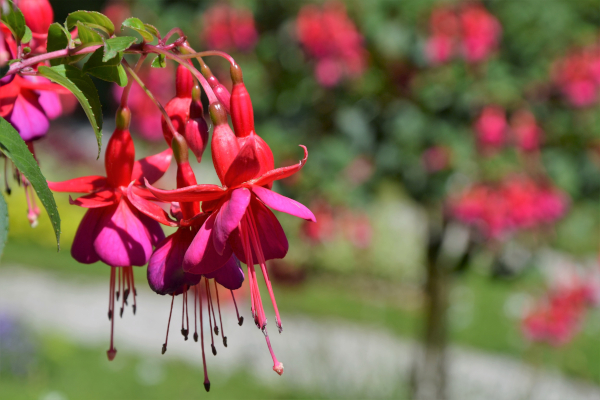
Zantedeschia is a genus of flowering plants from the family Araceae and is native to southern Africa. With a rich history dating back to the Ancient Romans, these deciduous or semi-evergreen perennials have been used as a symbol of celebration. Zantedeschia was Named after Professor Giovanni Zantedeschia, an Italian botanist.
There are two main forms of Zantedeschia: hardy and tender. Hardy forms of the plant can be grown outdoors, enjoy moist soil and full sun or partially shaded conditions - these are known as Arum lilies. Tender forms of Zantedeschia prefer being grown in containers or pots and should be brought inside over the winter - these are known as Calla lilies.
With tuberous flora in all colours from whites, yellows and oranges to deep reds and purples, Zantedeschias are not to be overlooked in any garden, as long as they have sufficient sunlight to grow in.
Ready to learn more about growing Zantedeschia? Read on for all there is to know...

Key Information
Soil pH
Position
Hardiness

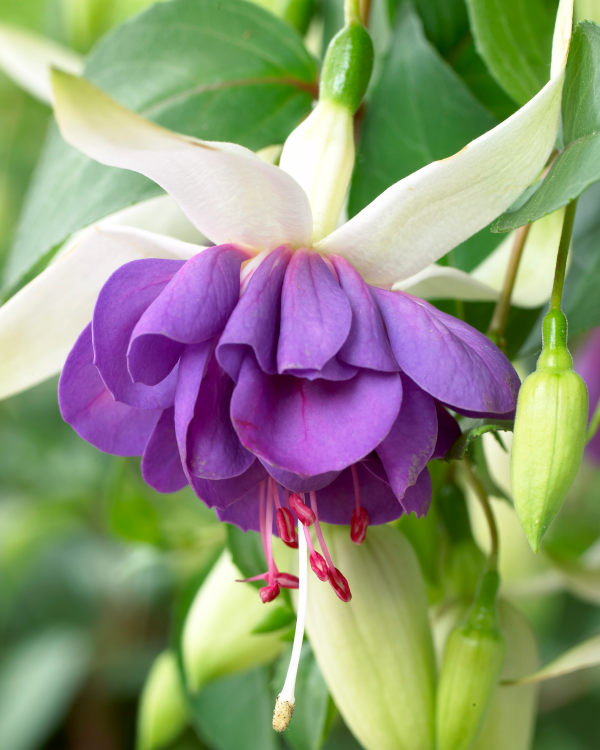
Where & when to plant Fuchsia
Position- Will grow in full sun, though best in a spot which receives shade from the midday and early afternoon sun.
Ensure shelter from cold, drying winds
Soil- Fertile, moist, well-draining. Any pH. Avoid extremes of very dry or waterlogged.
Flowering Period- Summer and autumn (occasionally all year round)
Hardiness- Ranging from tender (H1/ 5°C – 10°C) to hardy (H4/ -5°C – -10°C)
Tender or half-hardy fuchsia
Plant these outside once all risk of frost has passed in your area. This can vary depending on the region, though is usually around mid-May. If your young plants arrive before it is safe to plant them out, keep in a frost-free environment such as a greenhouse, conservatory, or sunny windowsill. If there is enough space in your frost-free ‘holding zone’, you might want to plant up hanging baskets and containers early to get them off to a head start.
When the time comes, tender or half-hardy fuchsias can be grown as summer bedding in hanging baskets (trailing varieties are best for this), container displays, or beds and borders. Give them a sunny spot which ideally gets shade for a few hours in the middle of the day. Ensure this is sheltered from strong winds which can blow the flowers off, particularly the larger-flowered varieties.
Alternatively, if you intend to grow your tender fuchsia as a permanent greenhouse or conservatory plant, pot up into a decorative container filled with a well-draining mix as soon as it arrives, and place in a spot with bright, indirect light. This might mean setting it back slightly from a sunny window, having in an east or west-facing location, or using shade netting.
Hardy fuchsia
For best results plant these out in spring or early summer. Choose a warm, sunny, sheltered spot, ideally with a little shade from the midday sun. You may wish to grow your hardy fuchsia as a standalone shrub, informal hedge, or train it as a standard or climber.
How to plant Fuchsia
- For planting in the garden, dig the soil area removing any large stones and weeds and breaking up any lumps. Mix in some organic matter such as manure or garden compost. If your soil is heavy clay, now is also the time to add a generous helping of horticultural grit. Rake level and firm with your heels. Rake level again.
- Water plants well and allow to drain before planting.
- A good tip is to dig a hole twice the size of the root-ball. Fill with water and allow to drain before placing in the plant.
- Place the plant in the hole, positioning the surface of the compost around 5cm deeper than soil level. Submerging it in this way is a useful way of offering extra protection from harsh winters.
- Backfill with soil and firm in gently with your foot.
- Soak well with water.
- Mulch around the base with well-rotted organic matter.
- For planting in containers, first choose an appropriately sized pot. You may wish to grow fuchsia on its own in a pot just a few centimetres larger than the rootball, or as part of a larger, mixed container display. Either way, ensure there are plenty of drainage holes in the bottom.
- If you are using a large or heavy pot, it can be a good idea to fill and plant it in situ to save yourself the trouble of moving once full.
- Use a good quality potting compost with plenty of horticultural grit mixed in, and, if not already present in the compost (check the description on the bag) some slow-release fertiliser granules.
- Start by partially filling the pot with compost; enough so that when placed on it the upper surface of the root ball is about 3cm lower than the top of the pot.
- Infill all the space surrounding the root ball with compost, firming down with your fingers then adding a little more so the plant is held tight.
- Pick up the container and lightly tap on the potting bench or ground a few times to help further settle the compost around the plant.
- Soak well with water.
- A mulch with horticultural grit will look attractive and help to prevent a ‘cap’ or crust forming on the top of the compost (something container plants can suffer due to the artificial nature of their watering).
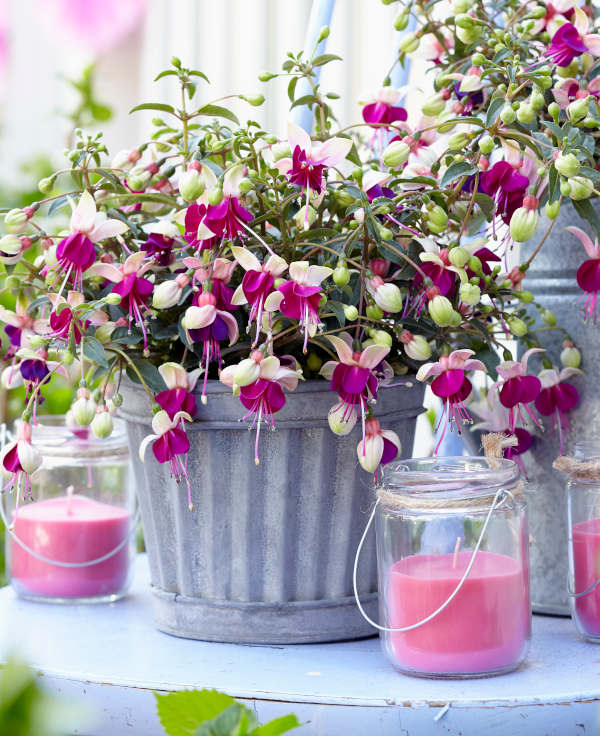
What to plant with Fuchsia
Tender or half-hardy fuchsias mix beautifully with other container-favourites such as petunia, calibrachoa, bidens, and begonia.
Hardy fuchsia can be planted out permanently in the garden, and blend easily with a huge range of planting styles. Try combining with other flowering shrubs such as hydrangea, loropetalum, and sollya, or use as a backdrop to classic perennials including geranium, salvia, astrantia, and digitalis. Alternatively, you might wish to grow yours as a flowering hedge mixed with companions such as syringa, abelia, and osmanthus.
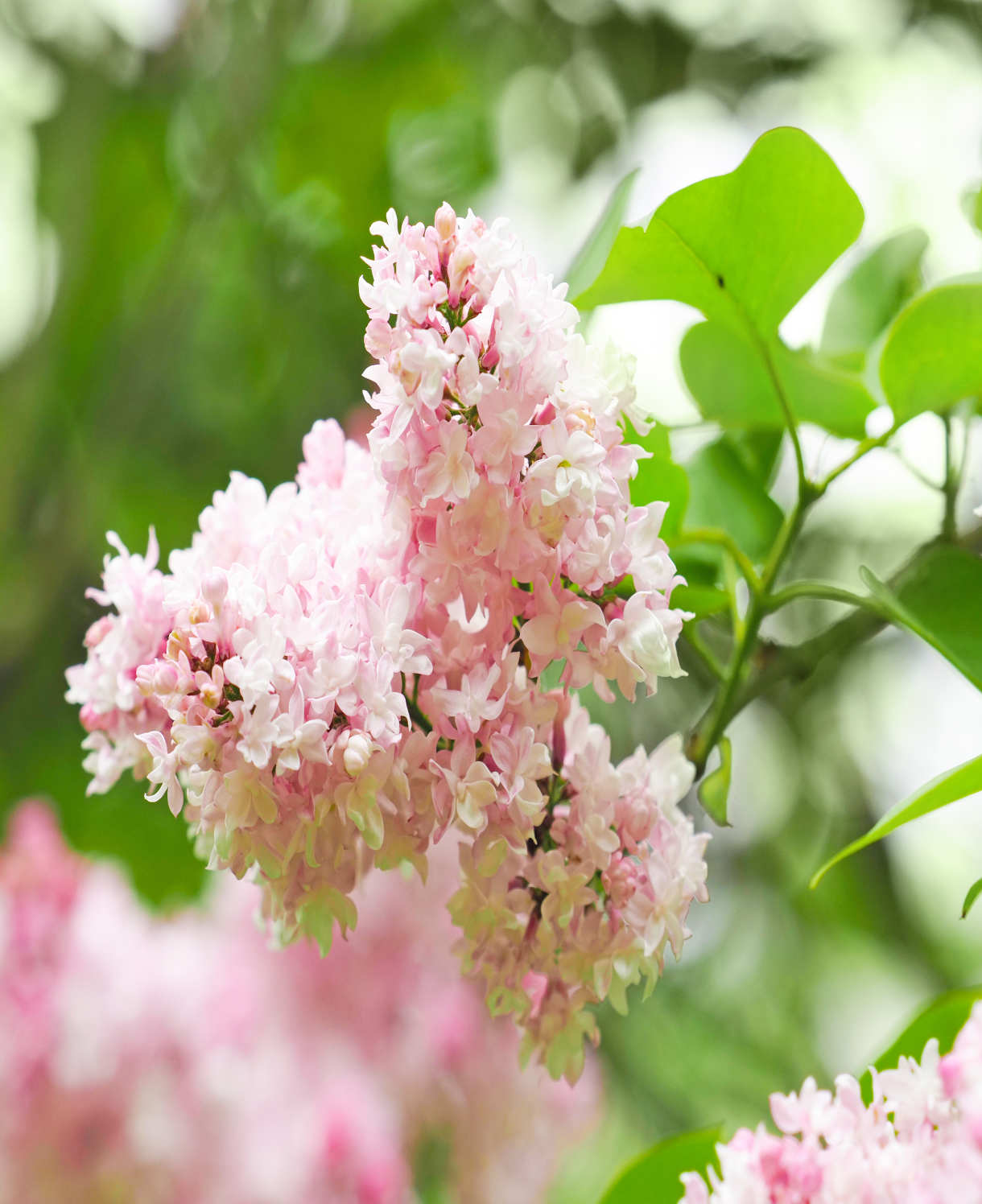
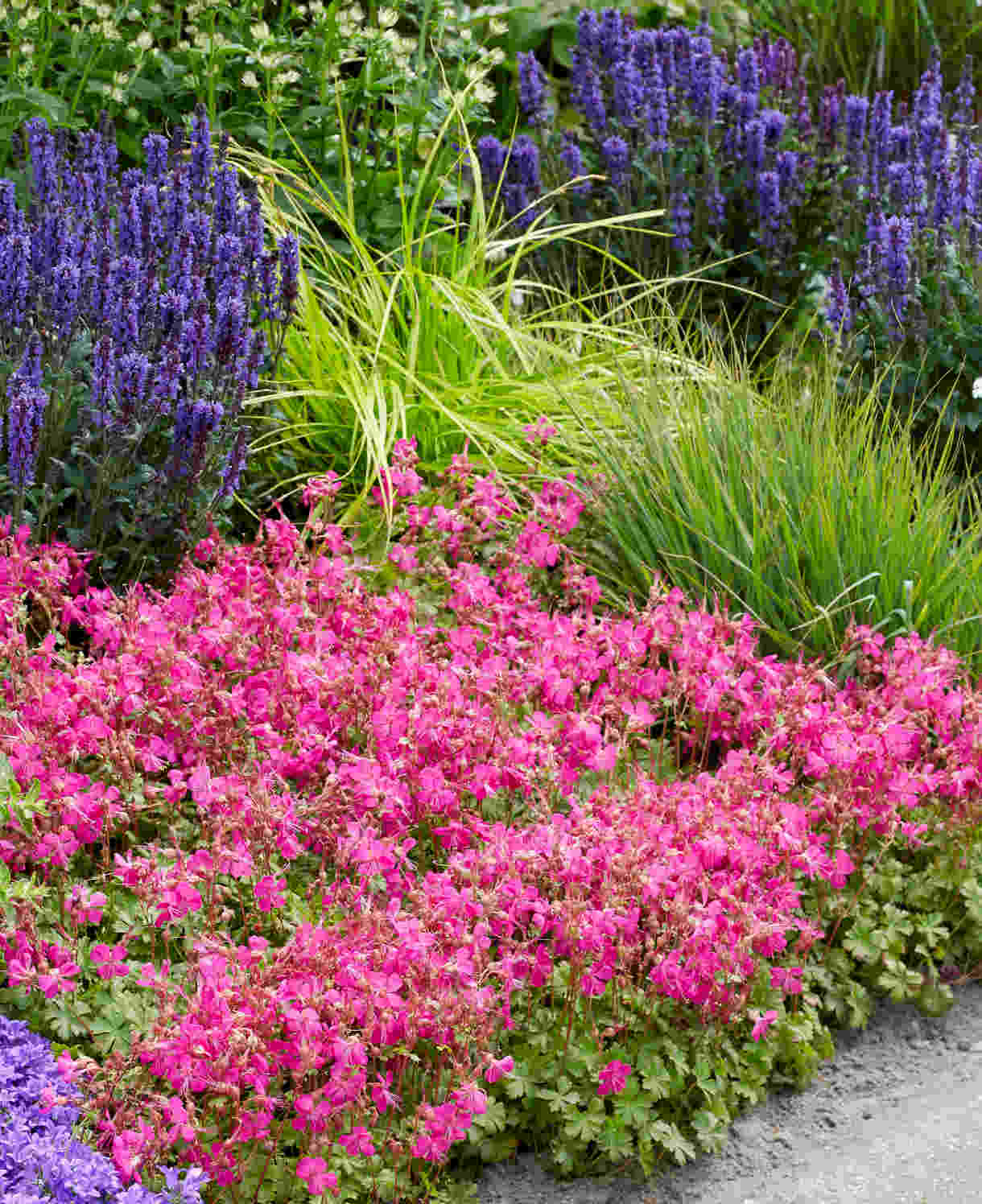
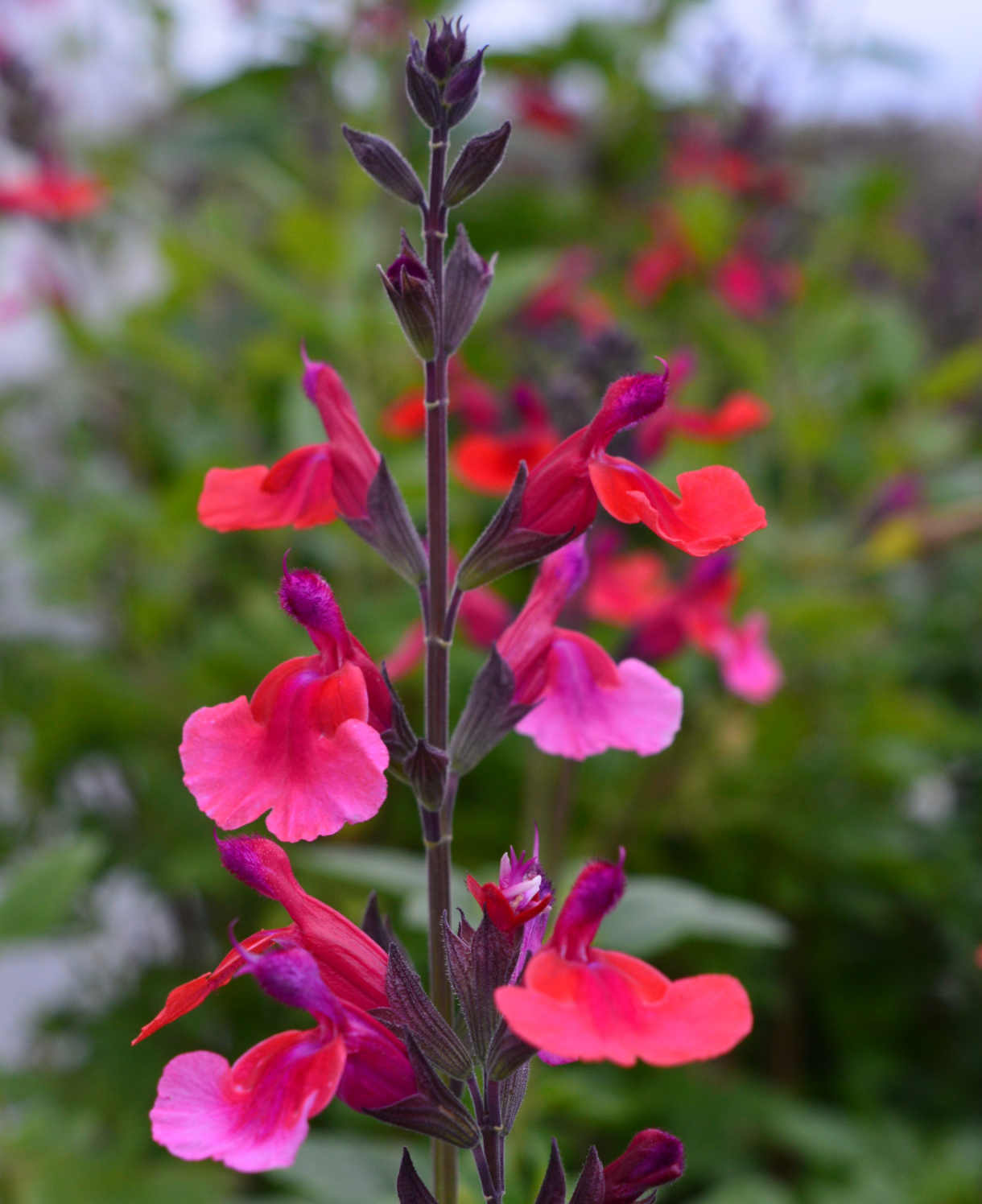
How to care for Fuchsia
Pruning and Deadheading
Tender or half-hardy fuchsia
When your fuchsia arrives, you can pinch out the growing tip to encourage bushier growth (though this is by no means essential). After this, leave it to its own devices, and, if you are treating as annual bedding, remove to the compost heap in autumn.
Fuchsias grown as conservatory or greenhouse plants require only a light tidy in spring. Remove any dead, diseased, or crossing growth, and lightly shape if required.
Hardy fuchsia (RHS pruning group 6)
Expect a little winter dieback, which can be removed in spring. Simply cut back to healthy buds lower down the stem.
A very cold winter may cause the entire plant to die back. In these cases, cut all growth down to the ground, taking care not to damage any new shoots coming from the base.
Fuchsia hedging can be pruned in spring, reducing side shoots to healthy buds.
Watering
Water containers and hanging baskets regularly throughout the growing season to keep the compost consistently moist but not soggy. In hot, dry weather this can mean watering daily. Allowing the top couple of centimetres of compost to dry out between watering is a useful rule of thumb to help avoid overwatering. Use your finger inserted into the compost to check this.
Tender to half-hardy bedding fuchsia in the open ground will require less watering – a good soak at planting then weekly during dry spells. Hardy fuchsia in the open ground needs even less (once established). Again, a good soaking on planting, then every week or so during the first spring and summer. After this, it should require little more than an occasional soak in very hot, dry weather.
Feeding
Tender or half-hardy fuchsia
Plants grown as annual bedding put on the best performance when given plenty of nutrients. In hanging baskets and containers, make sure you use a good quality compost with some slow-release feed mixed in, and apply a liquid feed if at any point the plants start to look tired. The latter also goes for bedding grown in the open ground.
Hardy fuchsia
On healthy, fertile soil, an annual mulch of well-rotted organic matter (i.e., a layer of manure or garden compost applied to the soil around the plant) should provide sufficient nutrients for your fuchsia. This has the added benefit of suppressing weeds and locking in moisture.
If yours looks in need of an extra boost, applying a general purpose granular feed to the surface of the soil and lightly working in (known as a ‘top dress’) can reap benefits. Aim to do this in spring, and then again in midsummer if needed.
Permanently container-grown plants rely more on the gardener for nutrition. Get off to a flying start by making sure you use a good quality compost, then throughout the growing season (March to September) apply a liquid feed at regular intervals according to its instructions. Alternatively, top dress with a general purpose granular feed every three months throughout the growing season.
Cold Protection
Tender or half-hardy fuchsia
These are usually treated as annuals in the UK. This means planting out in spring, enjoying for one growing season, then putting on the compost heap in autumn. It is possible to overwinter these indoors, though their appearance and vigour in subsequent years rarely matches the first. Given their widespread availability and relative low cost, most gardeners opt for starting afresh each year.
Hardy fuchsia
It is worth noting that there are varying degrees of hardiness, and even hardy fuchsias can be affected by very cold winter weather. It is therefore best to plant them in a warm, sheltered spot if you can, to minimise risk of damage (and certainly out of cold, drying winds). Even so, you may notice some dieback after winter. See our advice in ‘Pruning and Deadheading’ for how best to deal with this.
Pests and Diseases
Outdoors, fuchsia can sometimes find itself host to pests such as aphids and fuchsia flea beetle.
These are part of a balanced garden ecosystem, and the best approach is to leave them to their natural predators (e.g. birds, ladybirds, wasps, frogs). When numbers are so large, however, that their feeding starts to inhibit and disfigure growth, you may feel it necessary to take action. Regularly blasting off with a hose or wiping away with a cloth or piece of kitchen paper can help to keep numbers down without harming other members of the ecosystem.
In glasshouses or conservatories, the usual issues of spider mite and aphid can crop up. Keeping plants as healthy as possible is the key to warding off problems, and by this we mean proper ventilation, adequately spaced plants (for good air flow), keeping everything well-watered and fed, and repotting into larger containers when necessary. Thoroughly cleaning the indoor environment every winter can also help to remove overwintering populations of pests.
Where infestations do take hold, try introducing biological controls (often sachets or tubes containing miniscule natural predators), or in the worst cases, remove the affected plant/s altogether.
How to propagate Fuchsia
Fuchsia is fabulously easy to propagate from cuttings, offering quick rewards for minimum effort.
Tender or half-hardy fuchsia
These come easily from softwood cuttings, which can be taken whenever there is lush, green growth.
- Simply snip off a shoot and place it in a glass of water (making sure the leaves don’t touch the water).
- Once the roots have reached a couple of centimetres long, pot into a 9cm pot filled with well-draining compost.
- Keep watered though not soggy.
- Grow on into a frost-free environment until large enough to use.
Hardy fuchsia
This type of fuchsia is best propagated by hardwood cuttings in late autumn.
- Select shoots of fully ripe, current year growth (which by now will be bare and leafless), cutting at the join with last year’s growth.
- Trim to 15-20cm, with the top cut just above a pair of buds, and the bottom cut just below a pair of buds. It is good practice to make the top cut a sloping one, both to aid water runoff, and to remind you which end is the top.
- Spacing approximately 10-15cm apart, firm into a trench in a prepared bed (with well-rotted organic matter and grit dug in), the top 3-5cm of the cutting showing above soil level. Alternatively insert into containers filled with a gritty compost mix.
- Water in lightly. Place containers in a cold frame or unheated greenhouse.
- Check and re-firm trench cuttings after a frost (which can lift them out of the ground).
- Leave cuttings in place until the following autumn ensuring they do not dry out during the summer. By this point they should have rooted and can be lifted and either potted or planted out as required.
* Many plants carry Plant Breeders Rights and cannot be propagated for commercial purposes.
Common Fuchsia Questions
- Do fuchsias like sun or shade?
Fuchsias need sun, though do best somewhere with a little midday shade. - Do fuchsias grow well in pots?
Yes, whether the small, annual bedding types or hardy, long-lived shrubs, all fuchsias will grow happily in a container. - Are fuchsias easy to grow?
Tender or half-hardy fuchsias are some of the most straightforward and floriferous annual bedding you can grow. Hardy fuchsias make equally undemanding members of the garden, provided you get their location right (i.e., as warm and sheltered as possible). - Do fuchsias grow back every year?
Annual bedding fuchsias will be killed off by winter and won’t return the following year. Hardy fuchsias can be expected to remain in the garden for many years. A very hard frost may knock them back to the ground, though they are very likely to regrow from the base.
